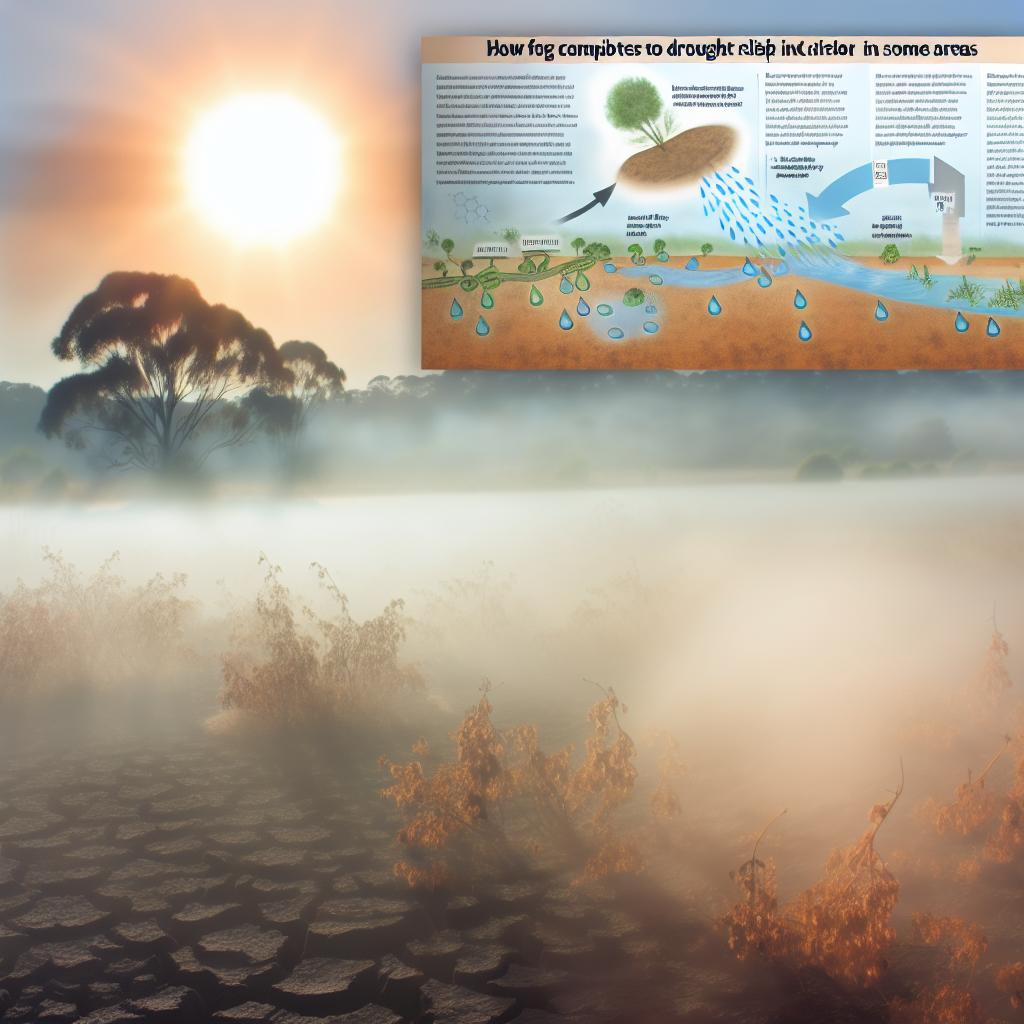
How Fog Contributes to Drought Relief in Some Areas
Understanding Fog
Fog is essentially a cloud at ground level, distinguished by its composition of tiny water droplets suspended in the air. This meteorological phenomenon occurs when the temperature of the air closely matches the dew point, resulting in condensation. Fog is commonly observed in coastal regions, high elevations, and areas influenced by maritime climates. These conditions not only define the presence of fog but also allow it to play a crucial role in various hydrological processes. Particularly in arid or drought-prone regions, fog can serve as a significant source of moisture.
The Role of Fog in the Water Cycle
Fog’s contribution to the water cycle is notable for its ability to supply moisture, especially in areas with limited precipitation. In certain environments, fog functions as a vital supplemental water source, aiding ecosystems where rainfall is scarce. This characteristic is especially critical in regions plagued by seasonal drought or where access to fresh water is otherwise constrained. Through processes of condensation and deposition, fog effectively complements traditional precipitation, aiding in the growth and sustainability of local flora and fauna.
Fog as a Source of Moisture
In some unique ecosystems, plants have evolved remarkable mechanisms to utilize fog’s moisture directly. Coastal regions, such as California’s coastal redwood forests, provide a classic example of this adaptation. These forests rely heavily on fog for sustenance, as the towering redwood trees can intercept fog moisture, sustaining themselves even during extended periods of dryness. Similarly, the Atacama Desert in Chile, known as one of the driest places on Earth, also demonstrates this moisture capture phenomena. Plants and trees in these areas absorb moisture from fog, allowing them to endure prolonged drought conditions effectively.
Fog Collection Techniques
To harness the moisture carried by fog, some regions have developed innovative fog collection systems. These systems are typically comprised of fine meshes designed to intercept and capture the droplets suspended in the fog. Once collected, this water can be utilized in various ways, such as for agricultural operations, drinking water supplies, or for replenishing depleted local aquifers. For instance, FogQuest, an organization dedicated to advancing fog collection techniques, has successfully implemented projects aimed at aiding communities where water scarcity is a pressing concern. These systems provide tangible solutions to localized water challenges by utilizing an otherwise overlooked natural resource.
Environmental Benefits of Fog Collection
The benefits of fog collection extend beyond immediate water source provision. One of the significant advantages is its potential to foster reforestation and ecological restoration in regions negatively impacted by deforestation or other environmentally degrading activities. By enhancing the local water supply, fog collection systems support vegetation regrowth, thereby promoting biodiversity and assisting in ecosystem stability. This, in turn, helps restore natural landscapes and contributes to the creation of resilient environments capable of withstanding climatic fluctuations and stresses.
Challenges and Considerations
Despite its promise, fog collection as a solution to water scarcity does face several challenges. The effectiveness of fog collection systems largely depends on a consistent presence of fog, which can vary greatly with seasonal and regional climatic conditions. Additionally, the establishment and maintenance costs associated with fog collection infrastructure can pose financial hurdles for communities most in need. Adequate funding, long-term planning, and local support are crucial to the successful implementation and operation of these systems.
Concluding Thoughts
Fog holds significant potential in contributing to water scarcity relief, showcasing the intricate relationship between natural atmospheric phenomena and the sustained functioning of ecosystems. Employing techniques such as fog collection not only addresses immediate water shortages but also supports long-term environmental health and stability. As climate patterns continue to change, understanding and effectively leveraging natural resources like fog will become increasingly essential. Developing strategies to utilize such resources responsibly and sustainably is vital to ensure the continued resilience of ecosystems and communities dependent on them.
In conclusion, the strategic use of fog as a natural water resource exemplifies how scientific innovation can harness naturally occurring phenomena to address pressing environmental challenges. As our climate evolves, so too must our approaches to resource management, ensuring that we maintain a balance between human needs and environmental conservation. By appreciating and harnessing the natural processes exemplified by fog, we take a step forward towards a more sustainable and resilient future.






